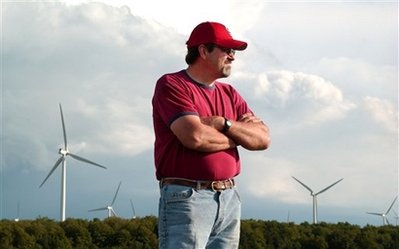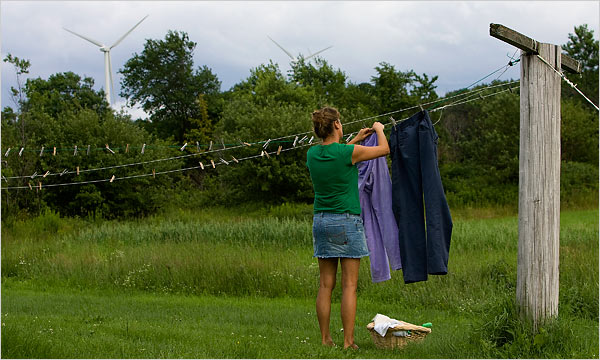Windmills split upstate towns
John Yancey stands on his property with wind turbines
from the Maple Ridge Wind Farm in background
Windmills divide towns and families throughout upstate
Profits not enough to offset intrusion for some
"Listen," John Yancey says, leaning against his truck in a field outside his home.
The rhythmic whoosh, whoosh, whoosh of wind turbines echoes through the air. Sleek and white, their long propeller blades rotate in formation, like some otherworldly dance of spindly-armed aliens swaying across the land.
Yancey stares at them, his face contorted in anger and pain.
He knows the futuristic towers are pumping clean electricity into the grid, knows they have been largely embraced by his community.
But Yancey hates them.
He hates the sight and he hates the sound. He says they disrupt his sleep, invade his house, his consciousness. He can't stand the gigantic flickering shadows the blades cast at certain points in the day.
But what this brawny 48-year-old farmer's son hates most about the windmills is that his father, who owns much of the property, signed a deal with the wind company to allow seven turbines on Yancey land.
"I was sold out by my own father," he sputters.
Click here to read the entire Associated Press report by Helen O'Neill.
Labels: Disadvantages, New York, Process








